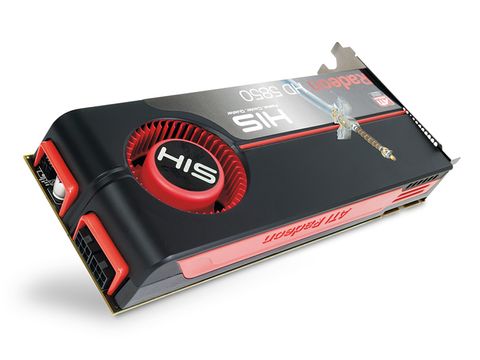Why you can trust TechRadar
As with any cut-down GPU, the big worry is how much has been culled in the quest for lower costs. Mercifully, the Radeon HD 5850 is more a case of precision surgery than brutal butchery.
First up, the 5850 has retained 1,440 of the 5870's 1,600 stream shaders – well within our 37 per cent in terms of bang for buck, then. Meanwhile, the texture unit count falls modestly from 80 to 72. Even better, all 32 render output units have escaped the chop.
Of course, none of that would matter if AMD has majorly put the kibosh on 5850's clockspeeds. It hasn't. OK, with a core clock of 725MHz and memory humming a 4GHz tune, it's significantly down on the 5870's 850MHz and 4.8GHz metrics. But again, we're not even close to the all-important 37 per cent figure.
Elsewhere, the 5850 bags all the benefits of the AMD "Cypress" architecture that powers its bigger brother. For starters, you get 1GB of GDDR5 graphics memory on a pukka 256-bit memory bus and therefore plenty of bandwidth for high res gaming. None of this 128-bit nonsense you see on cheaper boards.
In terms of video interfaces, the 5850 likewise loses nothing. The pair of DVI ports and HDMI and DisplayPort (one of each) sockets remain.
Next up is full support for Microsoft's latest DirectX 11 API. The big news here is the hardware tessellator which promises to radically increase geometric detail in the next generation of PC games. Time will tell just how important it proves. As is always the case with new hardware features, out-of-the-box game support is negligible.
DX11's other standout feature is the new Compute Shader. It's Microsoft's take on general purpose computing on the GPU, or GPGPU for short. The idea is to allow non-graphics software to plug in to the immense parallel processing power available in modern graphics chips.
Until now, GPGPU has been dominated by Nvidia's proprietary CUDA platform. Consequently, supporting applications are thin on the ground. But if anything can push GPGPU to critical mass, a common standard backed by Microsoft is surely it.
Finally, the 5850 doesn't just have a cost advantage over the 5870. It's also smaller and less power hungry, allowing it to squeeze into slightly smaller PCs. That said, at 151 Watts peak power, the 5850 is hardly a tree hugger. But every little helps. Moreover, cooler running, lower clocked cards tend to last a little longer.
Current page: ATI Radeon HD 5850: Specs
Prev Page ATI Radeon HD 5850: Introduction Next Page ATI Radeon HD 5850: PerformanceTechnology and cars. Increasingly the twain shall meet. Which is handy, because Jeremy (Twitter) is addicted to both. Long-time tech journalist, former editor of iCar magazine and incumbent car guru for T3 magazine, Jeremy reckons in-car technology is about to go thermonuclear. No, not exploding cars. That would be silly. And dangerous. But rather an explosive period of unprecedented innovation. Enjoy the ride.

